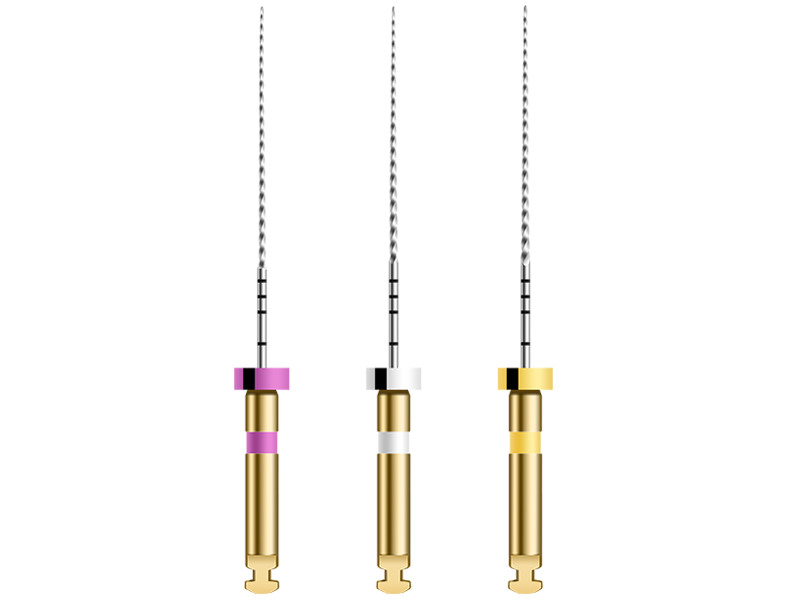The debris is continuously discharged upward to prevent the debris from pushing out of the apical hole and forming a postoperative reaction
◆ Instead of using a hand K-file
The cleaning efficiency is fast, the postoperative reaction small root canal has good concentricity and high smoothness
◆ Product highlights
Root canal treatment, dredge the root canal
|
specification |
Length |
Tip shape |
Color identification |
Section shape |
0mm |
1mm |
3mm |
7mm |
11mm |
15.5mm |
Rotational speed |
torque |
|
1302 |
21mm 25mm 28mm 31mm |
conical |
purple |
square
|
0.13 |
0.15 |
0.19 |
0.27 |
0.35 |
0.44 |
300 |
3.0 |
|
1602 |
21mm 25mm 28mm 31mm |
conical |
white |
square
|
0.16 |
0.18 |
0.22 |
0.30 |
0.38 |
0.47 |
350 |
1.5 |
|
1902 |
21mm 25mm 28mm 31mm |
conical |
yellow |
square
|
0.19
|
0.21 |
0.25 |
0.33 |
0.41 |
0.50 |
350 |
1.5 |

Order of operation:
Prior to preparation, make sure to establish a standardized linear path to the pulp cavity to ensure that the root canal file reaches the root tip or the first bend in a straight line
The crown is fully pre-opened to ensure that the lubricant enters one third of the root tip smoothly with the file and maintains the feel
Always keep instruments well lubricated, especially the root tip one-third. EDTA lubricant is recommended.
Short lift to ensure that the instrument does not rest at any point in the root canal.
The instrument should not reach the working length at once, and should be washed every 4 mm or so
Ensure that each instrument is prepared to form a smooth, repeatable access channel to ensure that subsequent instruments smoothly "glide" forward.






 Home
Home
 Product
Product
 News
News
 Contact
Contact